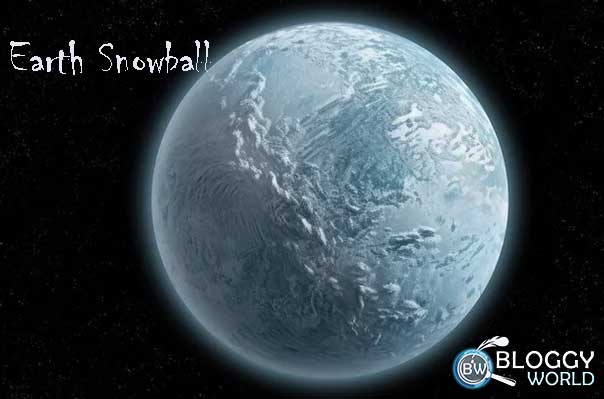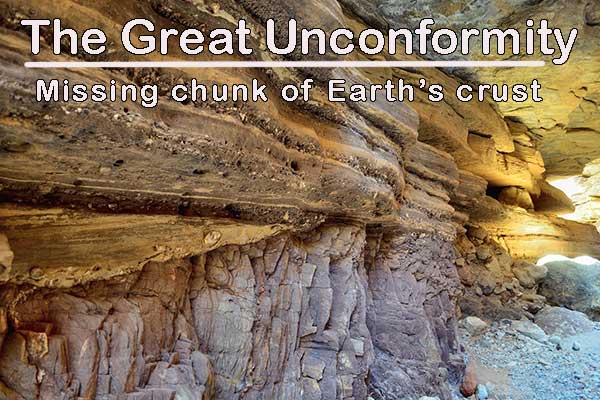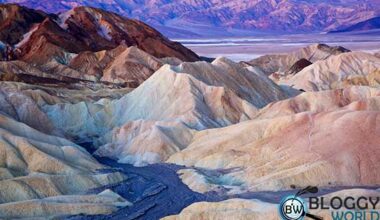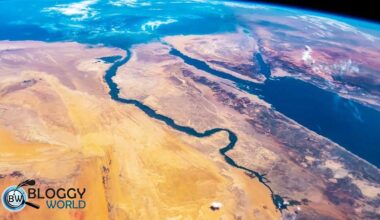Geologists have been puzzled for years by the missing chunk of Earth’s crust they call “The Great Unconformity”. With new technological advancements and research, they suggest that this gap was caused by intense glacial erosion during the “Snowball Earth” period when nearly the entire planet was covered in ice.
What Happened 60 Million Years Ago?
About 60 million years ago, one of the largest continental collisions in Earth’s history occurred. The landmass of India collided with the Eurasian tectonic plate. This epic clash is still happening today and gave rise to the towering Himalayas. But, it didn’t just push land upwards; it also drove a massive amount of crust underground.
How Much Crust Went Missing?
A team of geophysicists from the University of Chicago used new modeling techniques to estimate the amount of landmass before the collision. They discovered that half of the continental crust that existed 60 million years ago is missing today. This finding was surprising to the researchers, including team member Miquela Ingalls.
Where Did All that Missing chunk of Earth’s crust Go?
Traditionally, geologists believed that continental crust, due to its buoyancy, rises during collisions, while denser oceanic crust sinks into the mantle. However, the only way to account for the missing crust from the Indian and Eurasian plates is if it also descended into the mantle. This challenges the basic principles taught in geology classes.
How Did They Find This Out?
The researchers analyzed 20 years of geological data on tectonic plates and used new estimates of plate movements. They concluded that a large-scale subduction of continental crust is the only explanation for the missing mass. Other possibilities, like the formation of the Himalayas or Southeast Asia, and erosion into sediment, don’t account for the lost volume.
What About the Mid-Atlantic Ridge Mystery?
Scientists have also been studying another area where Earth’s crust is missing, deep under the Atlantic Ocean. A team of British scientists surveyed a region 3,000 to 4,000 meters deep where the mantle is exposed on the sea floor. This “open wound” defies existing theories about tectonic plate evolution.
What Are They Doing to Understand It?
The team, led by geophysicists Roger Searle and Chris MacLeod, is drilling into the mantle to recover rock samples. Their goal is to understand whether the crust was ripped away by geological faults or if it never developed. This research is crucial to understanding how the Earth continues to evolve.
How Does This Affect Our Understanding of Earth?
These findings have significant implications for our understanding of geological processes. The interaction between the mantle and the crust is more complex than previously thought. This research also helps explain the presence of isotopes in ancient crystals and the distribution of asteroid craters.
What Is “The Great Unconformity”?
Another mystery, known as “The Great Unconformity,” refers to a large chunk of the Earth’s crust missing from the geological record. Severe glacial erosion during a period called “Snowball Earth,” when almost the entire planet was covered in ice, might explain their disappearance. This erosion created gaps in the sedimentary record, where older rocks were replaced by younger ones.

What Did Scientists Discover?
Researchers calculated that 3-5 kilometers of rock were stripped away globally due to glacial erosion. Dr. Brenhin Keller of the Berkeley Geochronology Center estimated that around one billion cubic kilometers of pre-Cambrian material is missing. Their theory is supported by the presence of isotopes in ancient crystals, suggesting significant erosion before the Phanerozoic era.
Where Are the Missing Chunks of Earth’s crust Now?
Scientists believe that glaciers not only eroded the rocks but also washed them out to sea. This means that the missing chunks of Earth’s crust may now be on the ocean floor, carried there by ancient glacial movements.
The discovery of the missing chunk of Earth’s crust is a significant milestone in geology. It highlights the complex and dynamic processes that shape our planet. With ongoing research and technological advancements, scientists continue to uncover mysteries of our ever-changing earth.







